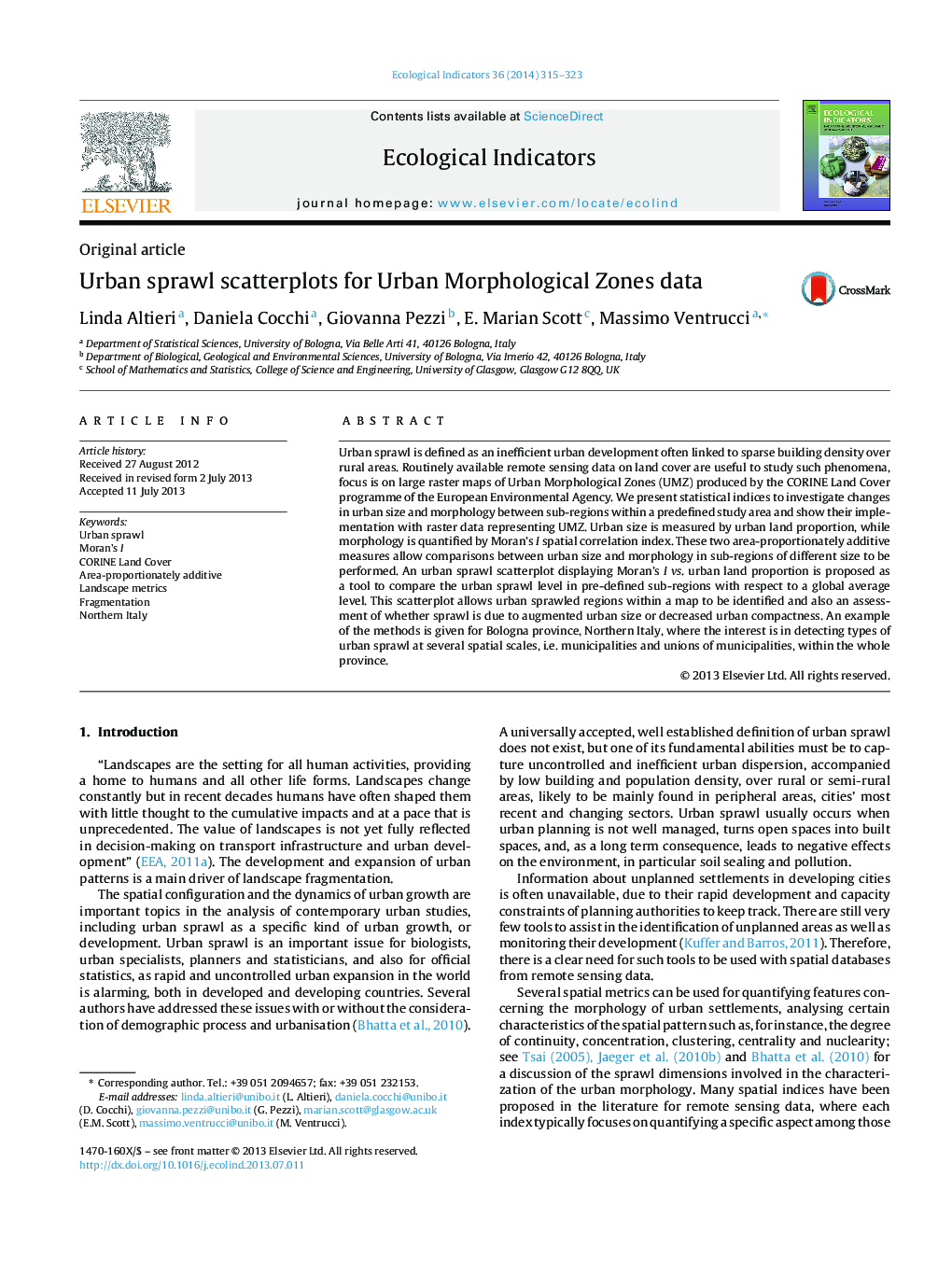| Article ID | Journal | Published Year | Pages | File Type |
|---|---|---|---|---|
| 4373323 | Ecological Indicators | 2014 | 9 Pages |
•Evaluation of urban sprawl statistics using raster data.•Development of simple visual tools jointly accounting for size and morphology.•Development of computational algorithms to model the high volumes of raster data.•Demonstration of properties of Moran's I when applied to binary raster data.
Urban sprawl is defined as an inefficient urban development often linked to sparse building density over rural areas. Routinely available remote sensing data on land cover are useful to study such phenomena, focus is on large raster maps of Urban Morphological Zones (UMZ) produced by the CORINE Land Cover programme of the European Environmental Agency. We present statistical indices to investigate changes in urban size and morphology between sub-regions within a predefined study area and show their implementation with raster data representing UMZ. Urban size is measured by urban land proportion, while morphology is quantified by Moran's I spatial correlation index. These two area-proportionately additive measures allow comparisons between urban size and morphology in sub-regions of different size to be performed. An urban sprawl scatterplot displaying Moran's I vs. urban land proportion is proposed as a tool to compare the urban sprawl level in pre-defined sub-regions with respect to a global average level. This scatterplot allows urban sprawled regions within a map to be identified and also an assessment of whether sprawl is due to augmented urban size or decreased urban compactness. An example of the methods is given for Bologna province, Northern Italy, where the interest is in detecting types of urban sprawl at several spatial scales, i.e. municipalities and unions of municipalities, within the whole province.
